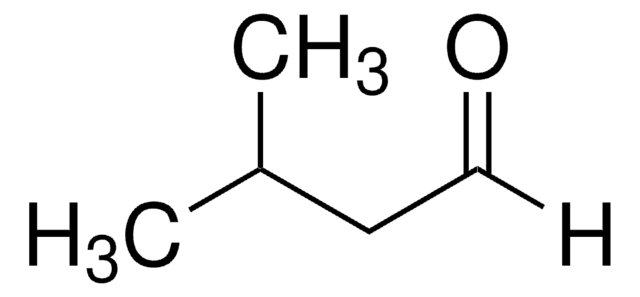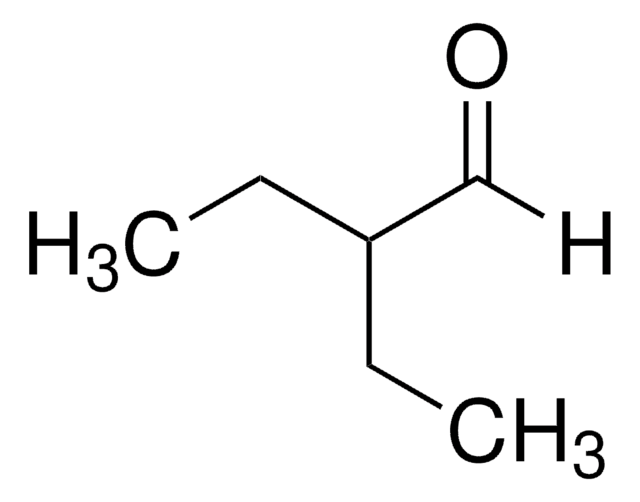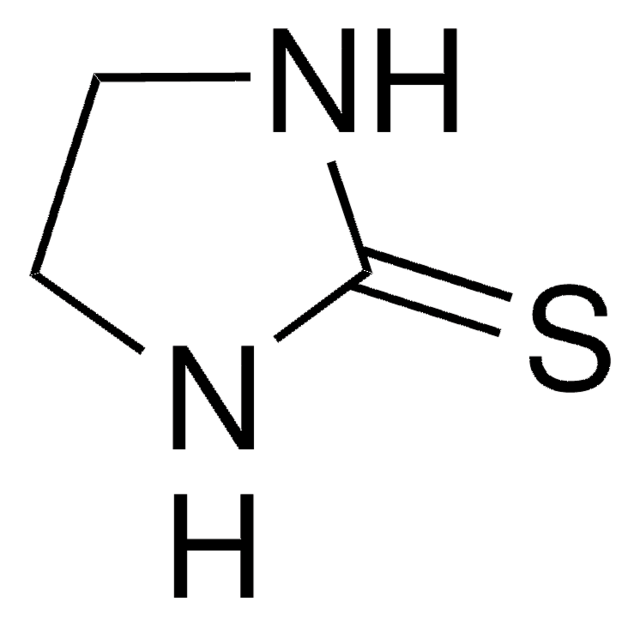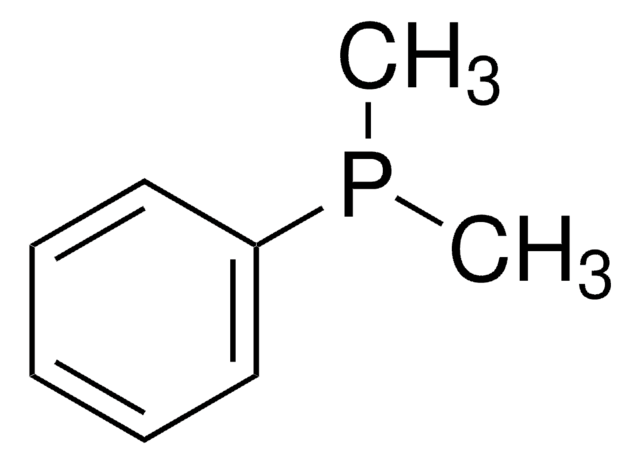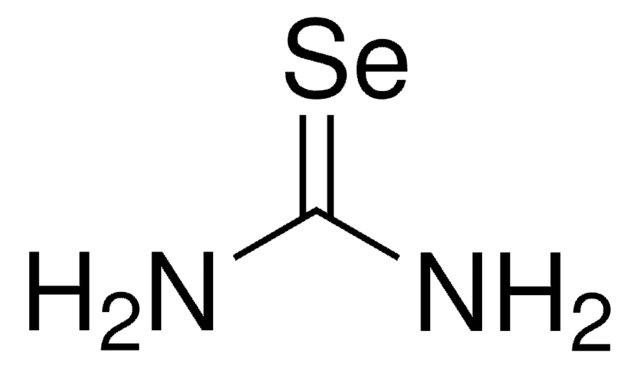All Photos(1)
About This Item
Linear Formula:
(CH3)2NCSN(CH3)2
CAS Number:
Molecular Weight:
132.23
Beilstein/REAXYS Number:
1744916
EC Number:
MDL number:
UNSPSC Code:
12352100
PubChem Substance ID:
NACRES:
NA.22
Recommended Products
assay
98%
form
solid
bp
245 °C (lit.)
mp
75-77 °C (lit.)
Storage temp.
2-8°C
SMILES string
CN(C)C(=S)N(C)C
InChI
1S/C5H12N2S/c1-6(2)5(8)7(3)4/h1-4H3
Inchi Key
MNOILHPDHOHILI-UHFFFAOYSA-N
Looking for similar products? Visit Product Comparison Guide
Related Categories
General description
Tetramethylthiourea molecule shows crystallographic two-fold symmetry with weak hydrogen bond packing, which connects the molecules to form layers.
Application
Tetramethylthiourea forms BF3 adduct with tetramethylselenourea.
signalword
Warning
hcodes
pcodes
Hazard Classifications
Acute Tox. 4 Oral
Storage Class
11 - Combustible Solids
wgk_germany
WGK 3
ppe
dust mask type N95 (US), Eyeshields, Gloves
Choose from one of the most recent versions:
Already Own This Product?
Find documentation for the products that you have recently purchased in the Document Library.
Customers Also Viewed
Jin Dai et al.
American journal of respiratory cell and molecular biology, 29(3 Pt 1), 352-358 (2003-03-22)
There is evidence that chronic exposure to high levels of ambient particulate pollutants (PM) is associated with chronic airflow obstruction, but how this occurs is not known. We exposed rat tracheal explants to Ottawa urban air particles (ECH93) or diesel
Peter G Jones et al.
Acta crystallographica Section B, Structural science, crystal engineering and materials, 69(Pt 4), 405-413 (2013-07-23)
We have redetermined the known structures of (i) methylthiourea (MTU) and (ii) 1,1-dimethylthiourea (1,1-DMTU), and investigated the structure of 1,3-dimethylthiourea (1,3-DMTU), which was however severely disordered. We report the structures of crystalline adducts of (iii) MTU with morpholine (1:1), (iv)
Yefeng Tang et al.
Organic letters, 7(4), 593-595 (2005-02-12)
A Pauson-Khand type of conversion of enynes to bicyclic cyclopentenones employing the commercially available Co2(CO)8 and tetramethylthiourea (TMTU) as catalysts is described. This method allows a variety of enynes with diverse functional groups to be cyclized into cyclopentenones of interest.
C Raby et al.
Endocrinology, 126(3), 1683-1691 (1990-03-01)
A number of compounds of pharmaceutical importance from a variety of chemical families, including thiocyanates, isothiocyanates, thiourea and derivatives, imidazoles, and various amines, were found to form charge transfer complexes with iodine. Parallel studies were carried out to investigate the
Jiqin Liu et al.
Molecular immunology, 45(15), 3984-3989 (2008-07-29)
N-Acetylcysteine (NAC) has been widely used as an antioxidant in research, however, it has also been found to reduce the binding of TNF to its receptor independent of its antioxidative role. In this study, we investigated the effect of NAC
Our team of scientists has experience in all areas of research including Life Science, Material Science, Chemical Synthesis, Chromatography, Analytical and many others.
Contact Technical Service